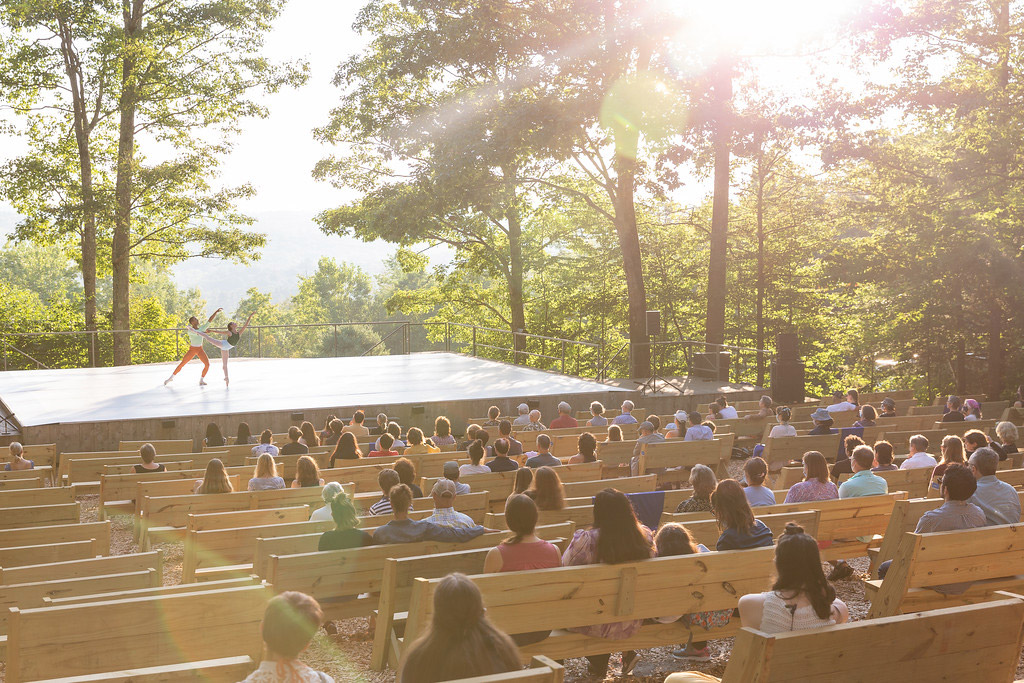
© Jamie Kraus. (Click image for larger version)
Jacob’s Pillow Dance Festival – 2021 Season
Featuring performance by Dorrance Dance, Contra Tiempo, Ballet Hispanico, Brian Brooks / Moving Company, Archie Burnett, Dallas Black Dance Theatre, LaTasha Barnes, STREB Extreme Action and Boston Ballet, Houston Ballet, Pacific Northwest Ballet appearing under the banner Ballet Coast to Coast
Becket, Jacob’s Pillow, Henry J. Leir stage
30 June – 29 August 2021
www.jacobspillow.org
How do you present a summer dance festival in the middle of a pandemic? Last year, the answer for Jacob’s Pillow was, you don’t. For the first time in its 88-year history, the festival had to be cancelled. This summer was altogether different. Executive Director Pamela Tatge and her associate curators Melanie George and Ali Rosa-Salas assembled a full program of performances, lectures, exhibitions, and classes, while still dealing with the effects and ongoing restrictions of the virus. Eleven companies were invited to present across nine concerts on the outdoor Henry J. Leir Stage from late June through August. The focus was on the Leir Stage because the indoor Ted Shawn and Doris Duke theatres, the usual festival venues, could not be used due to the pandemic. However, fate had another blow for the Pillow, when the Doris Duke Theatre burned to the ground early on the morning of November 17. How it started is still unknown. While losing a season is bound to create financial difficulties for any performing arts organization, losing a theater is devastating. Nevertheless, the Pillow directors and staff persisted, the audiences came, and the season was a great success.
The history of Jacob’s Pillow as a dance center began in 1931 when modern dance pioneer Ted Shawn bought the property, a former farm, in the Berkshire hills. The first performances at the Pillow were held in 1933, The Ted Shawn Theatre was inaugurated in 1942, and the Doris Duke Theatre was added in the 1950s. The 153-acre campus now includes dance studios, housing for the summer dance school, the Pillow’s extensive archive, an information center, shop, and more. Plans for rebuilding the Doris Duke Theatre are already underway, and the Shawn Theatre is being refurbished.
While the pandemic’s negative effects cannot be overstated, the Pillow proved that necessity is, indeed, the mother of invention. The festival has long been noted for its diversity and for an international presence, with past appearances ranging from the Royal Danish Ballet to South African dancer/choreographer Vincent Mantsoe. This year, while diversity was still at its core, performances at the Leir were limited to American companies because of travel restrictions. However, this gave groups, which are perhaps not as well-known as others, a chance to find a place in the festival, and for viewers to gain a wider idea of what is going on in dance across the country.
Audiences were given added benefits this year because the Leir Stage concerts were also shown online for a limited time, at no cost. This was particularly important when New England’s unpredictable weather intervened and concerts had to be cancelled. Online events had another positive effect in that they gave the Pillow and the festival companies world-wide exposure, while pop-up performances around Berkshire County were a further bonus for local audiences, as were roving performances that took place throughout the summer in various parts of the Pillow property.

© Christopher Duggan. (Click image for larger version)
One of the conclusions to be drawn from the 2021 festival is that a number of companies are no longer content to remain in long established, even stereotypical, dance categories. New York based Ballet Hispanico addressed this issue head-on in a work entitled Tiburones (Sharks, 2019). Choreographer Annabelle Lopez Ochoa referenced West Side Story in a work that countered Puerto Rican gender stereotypes, from male machismo and conflict to female sexuality, central to the Broadway production and film. Ochoa took a few recognizable poses and signature movements from the musical, such as finger snapping, and remade them to become part of ensemble dances that stressed community. She created a central duet for two men, instead of a man and woman, and made it supportive rather than competitive. A woman’s solo conveyed pain rather than the tired trope of Latina sass. A man with the kind of clapperboard used to mark scenes in a film, attempted to direct the dancers but was finally vanquished as they refused to do his bidding. The company’s other two offerings, Vicente Nebrada’s Batucada Fantastica (1982) and Gutavo Ramirez Sansano’s 18+1 (2012) used musical scores based in rumba and mambo, while choreographically liberating the dances from those specific movement forms.
Dallas Black Dance Theatre’s three works used technique to quietly call into question easy assumptions about what black dance might be. Classical ballet technique is where this company starts, with held up torsos, turnout, and choreography that often includes ballet steps. Classicism is coupled with movement from jazz, Afro-Caribbean, and modern dance to give the company a specific look all its own. Darrell Grand Moultrie’s Like Water (2021), which was receiving its premiere and was commissioned by the Pillow, exemplified this approach. The work, set to a jazz inflected score by Rodrigo Y Gabriela and Petr Aleksander, combined informality with a firm technical base, as well as displaying what director Melissa Young called the company’s humanity. Like Water conveyed a sense of affection, joy and resilience in the face of the difficult times in which this work was made.
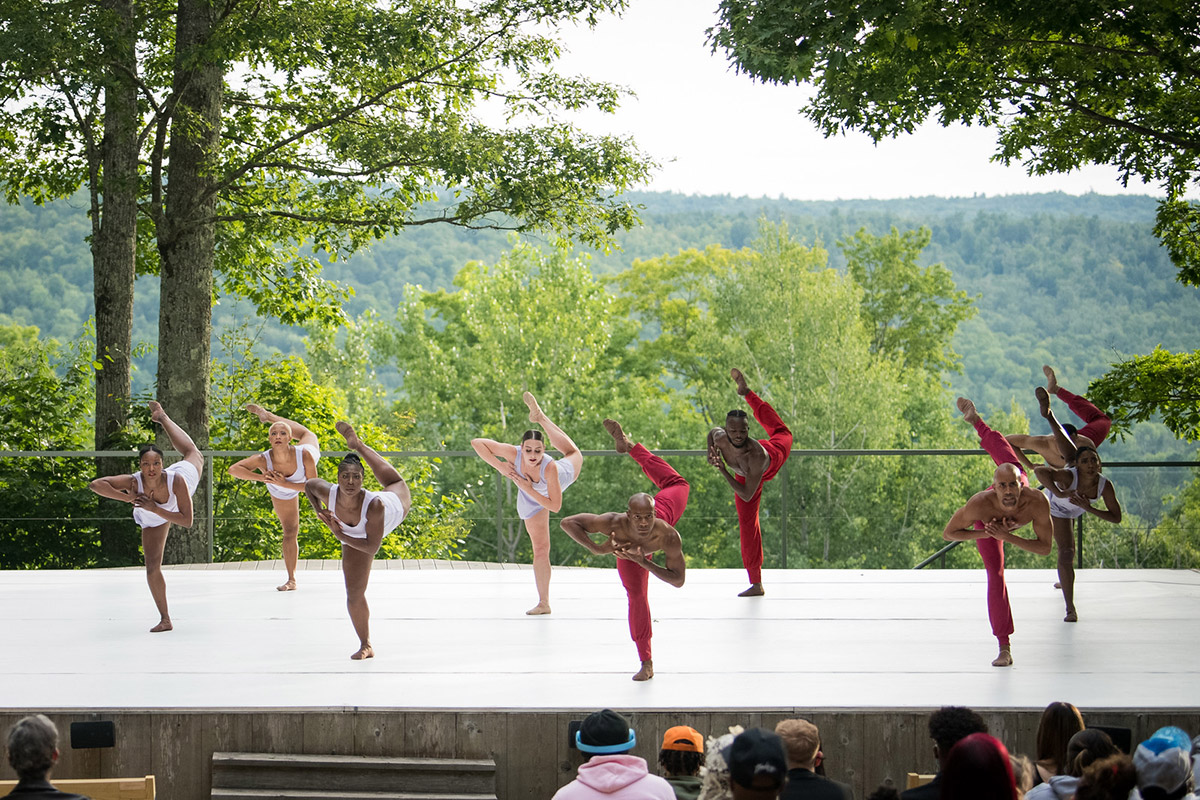
© Cherylynn Tsushima. (Click image for larger version)
LaTasha Barnes’ The Jazz Continuum (2021) used club and street dance such as the lindy hop, house dance, and hip-hop as the vocabulary for an hour-long work with much unison movement out of which solos and duets erupt, only to have the dancers drawn back into the collective. Although the dance was clearly choreographed and the movement tightly coordinated, room was left for individual style in the way steps were delivered, as well as in moments of improvisation by individual members of the group. The result was that The Jazz Continuum felt like a unified whole, yet exhilaratingly free. As with the Dallas Black Dance Theatre, a specific approach to creating and performing movement, in this case using a vernacular vocabulary to create a non-narrative work, took dance to a new place.
Archie Burnett fared less well in attempting to historicize his experience with black social and club dances in Life Encounters (2021), also a premiere. Burnett used recorded voice-over to create a chronological narrative of his discovery and interaction with dances such as the hustle, waacking, and vogue. However, in performance Burnett and the six dancers in his group tended to blend forms together so that it was difficult for the uninitiated to differentiate among them. Burnett, himself, is a specialist in waacking, which emphasizes the use of arms in a breathtaking display of speed and virtuosity. The other dancers are all virtuosos, as well, each having his or her own extraordinary skill. So while the dance was always interesting to watch, it didn’t fully materialize as autobiography or history.
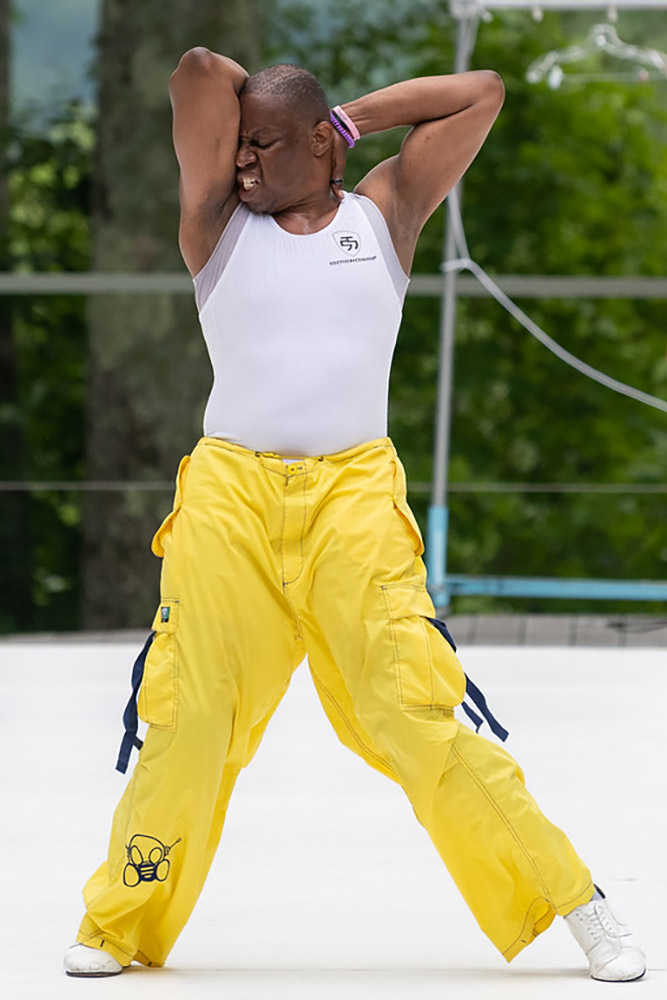
© Cherylynn Tsushima. (Click image for larger version)
The Los Angeles group, Contra-Tiempo (Activist Dance Theater), specializes in a kind of street theater that is aimed at encouraging racial and ethnic equality. True to its activist name, Contra-Tiempo offered a work entitled joyUSjustUS (2018), which combined verbal exhortations with an eclectic dance that ranged from folk to hip-hop. One could imagine the group at protests and union organizing meetings, in migrant camps, and in the agricultural fields of California. But their exuberant call for resistance, pride and justice, and the raw nature of their performance, didn’t seem best served in the formal setting of a stage concert. This dance needed to be in the trenches, fists raised against exploitation and oppression.
Nevertheless, joyUSjustUS made its points. And it made me reconsider one element of a performance by Dorrance Dance that I saw online. Michelle Dorrance is a veteran tap dancer/choreographer whose works are always polished, intelligent and highly entertaining. Downpours of Berkshire rain caused most of the company’s Leir Stage shows to be cancelled, so the Pillow recorded a roving performance that the group took to various sites around the Pillow property. The vignettes sometimes had to do with an interaction among technology, sound, and dance. In some cases the dance pointed to the fact that modern technology doesn’t always work well. Dancers in what looked like white, bee-keeping clothing, went about to various locations holding up antennae and a satellite disk. But communication wasn’t happening. There was static and interruptions that the dancers couldn’t conquer. Better luck was had with more primitive but more dependable tools like shovels and brooms, or the big triangles used to call country folk to dinner before every farmhand had a cell phone. The dancers used these implements to set up beats that they tapped with, to, and against, until full-fledged dances emerged. In other vignettes, saloon musicians became dancers, and in the final scene an entire village went about tasks in dance form, Dorrance herself stirring a cooking pot. At the end, everyone tapped down a path to When The Saints Go Marching In.
The one slightly uncomfortable note in this tribute to the rhythm of rural life was a scene set outside a shed where a black woman hangs laundry and dances while she does it. If the woman had been white, it would have been unnoticeable, but in an age of Black Lives Matter, when awareness of America’s long history of racial oppression and black stereotyping is a center of attention, the image suggested ideas of poverty, and even slavery, that seemed out of keeping with the work’s otherwise good-natured aims.
The outdoor Leir Stage is a beautiful venue, bordered by tall trees clad in delicate foliage, the Berkshire Hills serving as a backdrop. However, the space has no stage lighting, which means that even evening performances had to begin early and take place in broad daylight. The sunny, bucolic environment didn’t serve every company equally well. Those dance forms that ordinarily occur in crowded, late-night clubs, where the atmosphere is intimate and where lighting picks out dancing figures from the smoky gloom, might have benefited from an indoor setting. Ballet similarly seems to need controlled lighting to work its magic, otherwise the sweat and strain, and the very artificiality of the form can become glaringly apparent. Such was the case with Boston Ballet, Houston Ballet, and Seattle’s Pacific Northwest Ballet, three regional companies that banded together to perform under the title Ballet Coast to Coast. They were helped by costumes that were based on practice clothes, not a tutu in sight; but even so, it felt more like a rehearsal than a performance. Fortunately, there were some intriguing excerpts of works by Stanton Welch (Sons de L’Ame, 2013) and Justin Peck (Reflections, 2019), both for Houston Ballet, that compensated, and made me want to see more of this company. Welch is also Houston’s director.

© Jamie Kraus. (Click image for larger version)
U.S. regional groups have historically been feeders for the major New York and European companies. It seems unfair, but it is difficult for ambitious dancers not to be lured away. I would not be surprised if Harper Watters, an elegant soloist with Houston, and Christopher D’Ariano, a charismatic corps member at Pacific Northwest, don’t go on to careers elsewhere.
If the Leir wasn’t the optimum environment for several of the groups, it was nevertheless a boon for audiences hungry for live theater and little concerned about less than perfect conditions. And in some cases the Leir enhanced performances, as in the three dances offered by Brian Brooks/ Moving Company, which seemed to expand in power and beauty under an open sky. STREB Extreme Action, which is often seen in big inside performance spaces like New York’s Park Avenue Armory, looked even more spectacular in the vast open air of the Leir Stage, as the performers swooped and dove from heights before hitting the ground with force.
Like Archie Burnett, Elizabeth Streb took an autobiographical approach in From Ringside to Extreme Action. She commented in voice-over about the development of her art, while company members performed several of her early, experimental dances from the 1970s and ‘80s, all of which included simple props such as hoops, ropes, and poles. These early, rarely performed solos, were fascinating to see because they clearly read as dances and made clear where Steb’s background lies. As time moved on, Streb’s interest in working with props became ever more elaborate until today she is engaged with extremely large machinery. The major object in this show was a huge, half wheel that could be rocked to dangerous extremes and was used for various feats of balance.
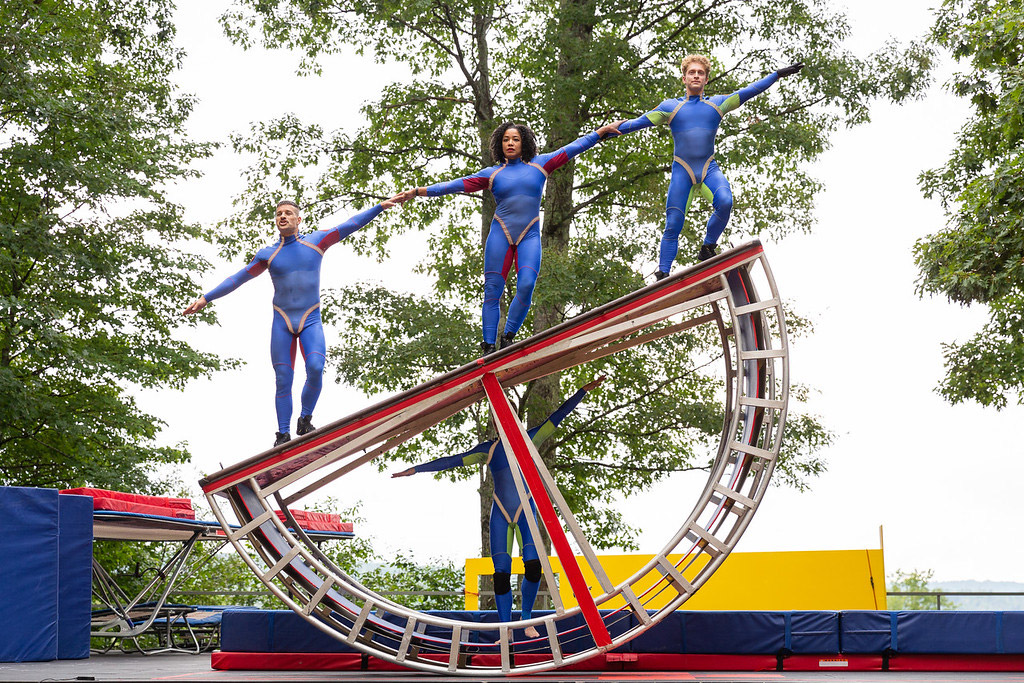
© Jamie Kraus. (Click image for larger version)
As I watched the show, I was struck by how Streb’s current work registers as choreography, but not dance. Even she seems to acknowledge the difference, in calling what she does “actions.” That raises the question of what it means to be a dance, an issue explored in the 1960s and ‘70s by postmodernists like Tricia Brown, Steve Paxton, Yvonne Rainer and others. For them, it was movement facts that made what they did dance. Streb, too, was exploring similar issues in her early solos, but whereas the postmodernists, once they decided they had found the basic components of dance, moved into more traditional, if altered, dance forms, Streb moved closer to circus, embracing the sense of danger coupled with skill that dominates high-flying circus acts. Dance, it would seem, is a little different, needing to impress the viewer in more varied ways than physical thrills, alone. That doesn’t make Streb’s carefully crafted movement any less interesting to watch, but it is different from dance in intention and result.
The pandemic was a constant concern during the Pillow season, but for the most part it remained in the background. Only one work at the Leir directly addressed it, Helen Pickett’s Home Studies: Parlor Floor Life (2021) for Boston Ballet, a well-meaning but misguided attempt to address the effects of Covid lockdowns in a humorous fashion. However, the pandemic didn’t have to be directly addressed for audiences to be aware of its presence. It was all around us in the required masks, limited admissions, and socially distanced seating. It was Brian Brooks/ Moving Company that most eloquently addressed the effects of the pandemic, although the works he presented remained wholly abstract. Flight Study (2021), a premiere, conveyed the darkness of the last eighteen months, while Closing Distance (2020), which focused on touch, brought the light of hope that comes with a society opening up. Brooks did not dance in these works, appearing only in a solo that the two company pieces bracketed. It was a small but inspired dance, a meditation on the choreographer’s role as creator. (There is a separate and full review of the Brian Brooks / Moving Company performance at the Pillow).

© Jamie Kraus. (Click image for larger version)
The Brian Brooks/Moving Company was among the highlights of the festival, but the festival itself, was the real triumph. For many, this viewer included, Jacob’s Pillow offered the first taste of live performance in more than a year. As such, the Pillow, its staff, and visiting dance groups, all deserve immense thanks for the gift of summer 2021.












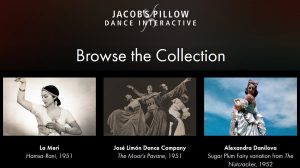
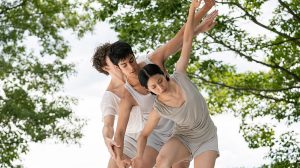

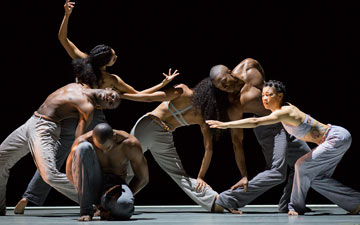
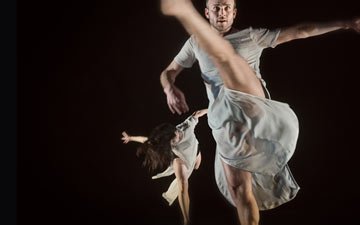
You must be logged in to post a comment.